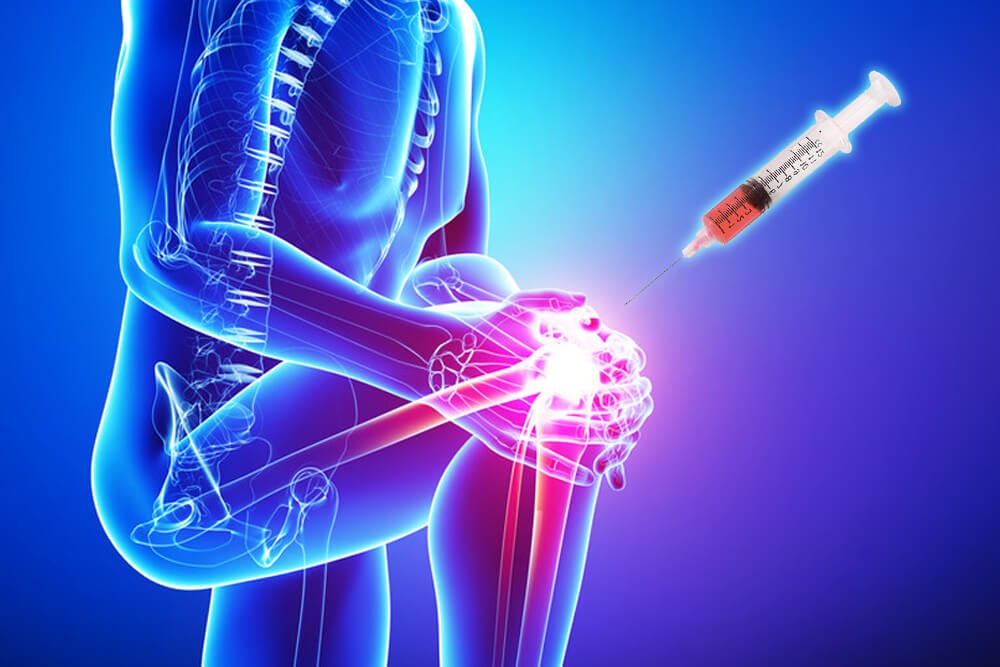Joint Pain And Osteoarthritis PRP Treatment
Osteoarthritis is a chronic illness that causes damage and inflammation to your joints. Over time, the bones in the joint rub against one another, leading to pain, swelling, stiffness, and restricted motion. Due to this, walking, climbing stairs, and other daily activities may become more difficult.
The condition can affect any joint in the body, although it most commonly affects the big toe, fingers, hips, and knees. Even though osteoarthritis can get worse over time, it can be efficiently treated.

Symptoms
Symptoms of osteoarthritis frequently appear gradually and get worse over time.
Osteoarthritis symptoms and signs include:
- 1. Pain
- 2. Stiffness
- 3. Tenderness
- 4. Restricted motion
- 5. Unpleasant experience
- 6. A bone spur
- 7. Swelling
Affected joints may hurt during movement or afterward.
Joint stiffness could be especially apparent in the morning or after a long time of inactivity.
When you lightly press on or close to your joint, it could feel tender.
Your joint may not be able to move through its entire range of motion.
When using the joint, you could experience grating sensations and hear crackling or popping sounds.
They might develop around the afflicted joint and feel like hard lumps of additional bone.
Inflammation of the soft tissues near the joint may be the cause of this.
Causes
Osteoarthritis develops over time as the cartilage that protects the ends of your bones in your joints slowly wears away. Joint motion is made possible by the hard, slick tissue known as cartilage. If the cartilage is totally worn away, bone will eventually rub against another bone.
Osteoarthritis is frequently referred to as a disease of wear and tear. Osteoarthritis, however, affects the entire joint in addition to the degeneration of cartilage. As a result, the connective tissues that keep the joint together and connect muscle to bone deteriorate and changes occur in the bone. Additionally, the joint lining becomes inflamed.
Complications
Osteoarthritis is a degenerative condition that often causes persistent pain as it progresses over time. Joint pain might get bad enough to make going about your everyday business challenging.
The pain and difficulties of osteoarthritis can lead to depression and sleep problems.
How Does the Orthogen PRP Method Treat Osteoarthritis?
Osteoarthritis can be treated in a variety of ways, the most popular being the use of injections, anti-inflammatories, physiotherapy, or surgery. Orthogen PRP, or Platelet-rich plasma, is a newer technique for treating osteoarthritis pain. Your blood's plasma contains substances that encourage the growth of tissues. When growth-promoting substances like plasma are injected into the injured area, it aids in the development of new tissues, which in turn helps to reduce tissue inflammation and, ultimately, pain.
A syringe is used to collect blood from your body, and when it has been coagulated, the plasma is separated from the other components. The PRP is injected into the injured area after it has been numbed. Normally, the entire process takes an hour.
The results of this therapy strategy so far have been pretty promising. After three to six and twelve months of follow-up, it had decreased pain and improved health outcomes. Additionally, since your blood is utilised for the procedure, it lowers any risk in any way. Joint Pain Treatment in Ernakulam is offered by Dr. Vineeth MB, an orthopaedic consultant in Kochi. Osteoarthritis PRP Treatment without Surgery in Kerala, India










